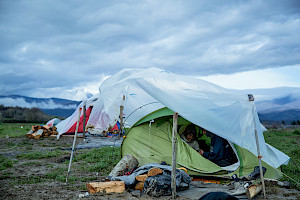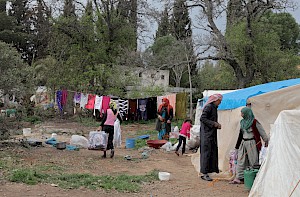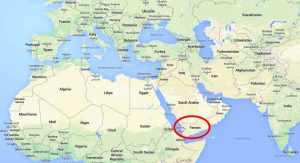Farming is inherently challenging. Is climate change the one obstacle farmers cannot overcome?
August 25, 2021Originally published in The Toronto Star on August 17, 2021 as contributing columnist
“The farmer has to be an optimist or he wouldn’t still be a farmer.” — Will Rogers
Extreme weather conditions have become so frequent and so severe in regions throughout the world, that I sincerely doubt there are many climate-change deniers in the farming industry. A lot of farmers are thoroughly exasperated and struggling to adapt to what may be the new normal. Some are simply giving up on farming altogether. Flooding and droughts are causing harm to agriculture production in many regions around the world. From Germany and Belgium where flooding has “effectively eliminated” any signs of a successful harvest, to southern Europe and the Pacific Northwest, where extreme heat is wreaking havoc to fruit, vegetable and grain crops. Brazil, an agricultural behemoth, is also experiencing extreme heat causing major crop damage. Parenthetically, Brazil was until recently a major “carbon sink”. But due to fires and deforestation, the Amazon is now emitting more carbon dioxide than it’s able to absorb. Instead of helping slow climate change, it’s now helping accelerate it.
Over the years, I have personally invested and dabbled in all types of farming in several countries, including Canada. I am also the founder of Acceso, a non-profit organization that helps alleviate poverty by creating jobs and raising income levels of smallholder farmers in Latin America and the Caribbean. I know first-hand how difficult farming is, even at the best of times. As any farmer will attest, somewhere between planting and harvesting, something is always bound to go wrong. Rarely do bumper crops coincide with good prices and low costs. Climate change, though, may be the one challenge that farmers may not be able to overcome. The agriculture industry may be facing an existential threat.
By now, you would think the conversation around climate change should be an easy and straightforward one. The science is irrefutable; our carbon emissions are to blame for this summer’s extreme heat. Just last week, the U.N.’s climate panel warned that limiting global warming to close to 1.5 degrees Celsius or even 2 degrees Celsius above pre-industrial levels “will be beyond reach” in the next two decades without immediate, rapid and large-scale reductions in greenhouse gas emissions. The 1.5 degrees Celsius threshold is a crucial global target because beyond this level, so-called tipping points become more likely. Tipping points refer to an irreversible change in the climate system, locking in further global heating.
Sadly, there are still many climate-change deniers standing in the way of progress on this issue. They are being “educated“ by a cadre of institutes and politicians, armed with carefully rehearsed points, who are in turn, funded by the fossil fuels industry. All this effort is meant to confuse the public on the climate change issue. The five largest oil and gas companies alone spend about $200 million (U.S.) a year on lobbying to control, delay or block binding climate policy. And I know first-hand, it works. Whenever I ever dare mention the facts of climate change in interviews or articles, a cohort of Twitter trolls stand ready to jump down my throat.
For full disclosure, I have personally invested in fossil fuels exploration and development over the years. Sometimes, even profitably. At a $100 billion annual contribution to the economy, I know how important an industry it is to Canada. But like many other investors, I came to the difficult conclusion some time ago that we need to transition out of fossil fuels into renewable energy. The cognitive dissonance of investing in fossil fuels while parts of Canada are literally burning up has become too much.
Accordingly, the nature of my investments have changed. I see huge potential in the renewable energy sector, for both profit and job creation. Wind, solar, and even nuclear energy (where Canada is a leader) make for attractive investment opportunities. Electric vehicles, battery storage, and especially the metals needed to electrify the planet are of particular interest. Did you know that 27 per cent of greenhouse gases come from vehicles? And that each gallon of gasoline burned releases 9000 grams of CO2 into the atmosphere? There is a reason why Tesla is up 700 per cent over the past couple of years.
But no sector needs the transition out of fossil fuels more than the agricultural sector. In the western United States, drought conditions have been steadily worsening over the years. According to the most recent U.S. Drought Monitor report, 96 per cent of the west is suffering from at least some level of drought. California and Nevada are now 100 per cent in drought after two years of exceptionally dry conditions.
Here in Canada, our agricultural and agri-food sector accounts for one in eight jobs (2.3 million people) and contributing $143 billion per year to our economy (7.4 per cent of GDP). I have friends in the farming sector in my home province of B.C. who confirm that this summer’s record “heat dome” (likely caused by a weakened jet stream) has caused irreparable damage to their crops and livestock. One friend, who is one of the largest blueberry producers in the Pacific Northwest, lost up to 50 per cent of his crop. He claims there is not much they can do as it’s not a lack of water, but rather the heat that actually destroys the plants. He believes this will be a trend that will continue in the ensuing years.
Another friend is in chicken farming. His story is more gruesome. This summer’s extreme heat prompted farmers to spray mist into the barns in an attempt to cool down the chickens. Tragically, the result was that the moisture created a muddy floor and as the temperature rose, the mud cooked the chickens alive. Reports are that in B.C.’s Fraser Valley alone, between 400,000 and 1 million chickens perished during the July heat wave. I am hearing similar stories with respect to the need to cull herds due to the lack of feed and the virtual “cooking” of cherries and raspberries on the vine and shellfish on the beach.
All this damage will come at a price. Alberta expects to pay out about $1 billion in insurance this year because of a severe drought that has crippled crops. Guess what will happen to insurance premiums next year? I know that in California farmers are struggling to get crop insurance due to wildfires. Many insurers are pulling out of California altogether.
In case you haven’t noticed, we are already witnessing higher food prices as a result of the overprinting of money, COVID-induced supply chain bottlenecks, higher transportation costs and labour shortages. Economists at four Canadian universities, including the University of British Columbia, produced Canada’s Food Price Report 2021, which forecasts overall food price increases with meat and vegetables rising between 4.5-6.5 per cent. Extreme weather and the resulting damage to crop yields will only add to those price increases.
As a consumer, you can expect your grocery bill to be substantially higher this fall and in future years. More worrisome, the global agricultural commodities market may face major shortages, putting food security at risk. So if the imminent destruction of our planet isn’t sufficient concern for climate change deniers and the lobbyists who support them, perhaps consumer and farmer outrage over food costs and incomes might do the trick. As for the investment community, it should also get squarely behind the transition to clean energy and mandate it, given it may be entirely for their own profit and self-interest.










